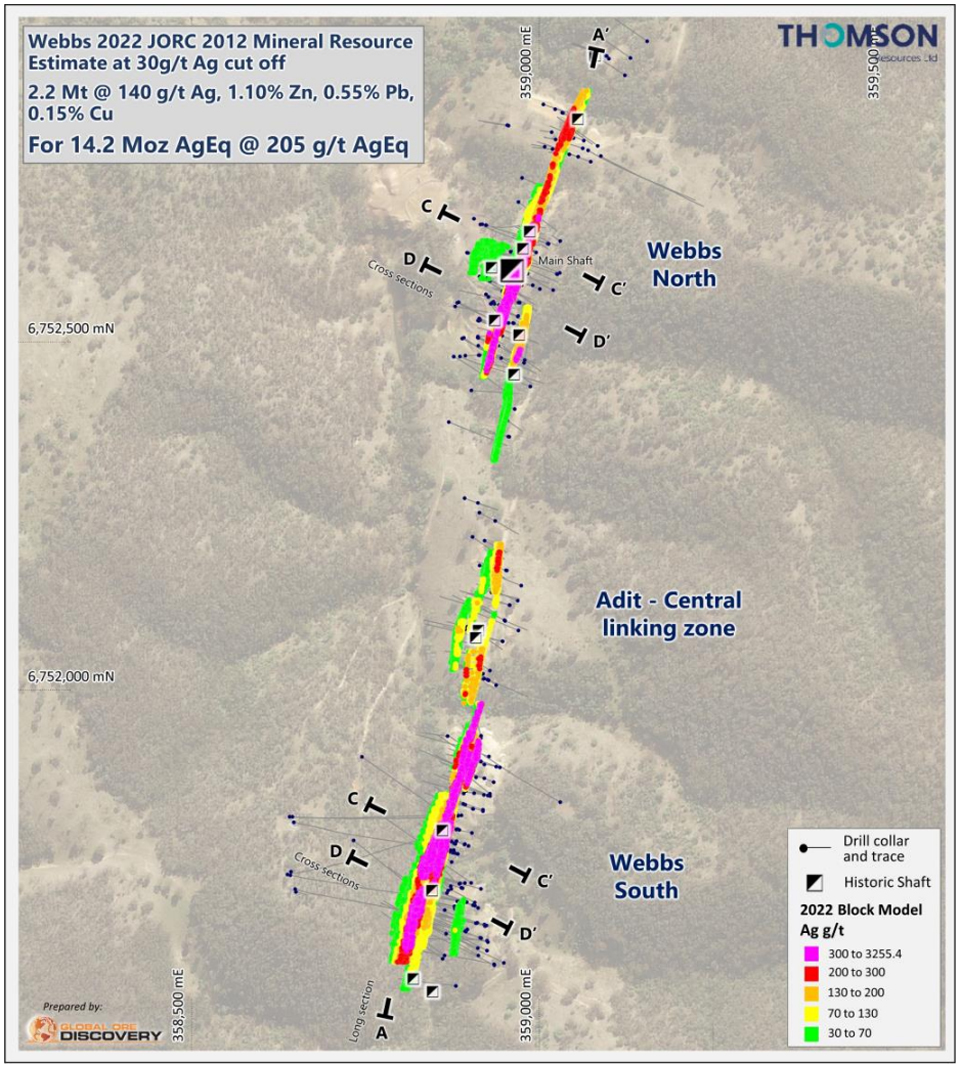Webbs Silver Project
Overview
The Webbs Silver Project is a high-grade silver bearing lode system located in northern New South Wales. The Webbs project is Thomson’s fifth MRE reported in accordance with JORC 2012 for a total of 14.2 Moz AgEq at 205 g/t AgEq.
Silver, zinc, lead and copper mineralisation at Webbs was discovered in 1884 and mined in several phases between 1884 to 1964. Almost all production has come from a high-grade steep south plunging “North Shoot” with numerous additional shafts, some up to 50 m deep and smaller prospecting pits occurring along the remainder of the 1.7 km long mineralised trend. The South Shoot hosting the majority of the resource, was not historically mined and remains undeveloped.


Exploration Potential
The work completed by Thomson and the Global Ore team to date on the Webbs deposit including validation of historic data, relogging and surface mapping, and updated grade-alteration modelling has not only significantly improved the understanding of controls on mineralisation at Webbs but has also highlighted a number of compelling targets for resource expansion and new exploration.
Drill hole targeting and drill pad permitting is in progress with the objective of starting to drill test these targets in Q3 2022.

Location And Geology
The Webbs Deposit is located approximately 65 kilometres northeast of Inverell and 230 kilometres southwest of the Gold Coast in northern New South Wales, Australia. The area consists of moderate to steep wooded hills, open farm country and open country and is dissected by several seasonal streams.
EL5674 comprises 4 graticular units for Group One Minerals and is centred about 10km north of Emmaville, in northern New South Wales. The licence is located within the New England Fold Belt which comprises Palaeozoic meta-sediments and volcanics, intruded by granites and granodiorites.
